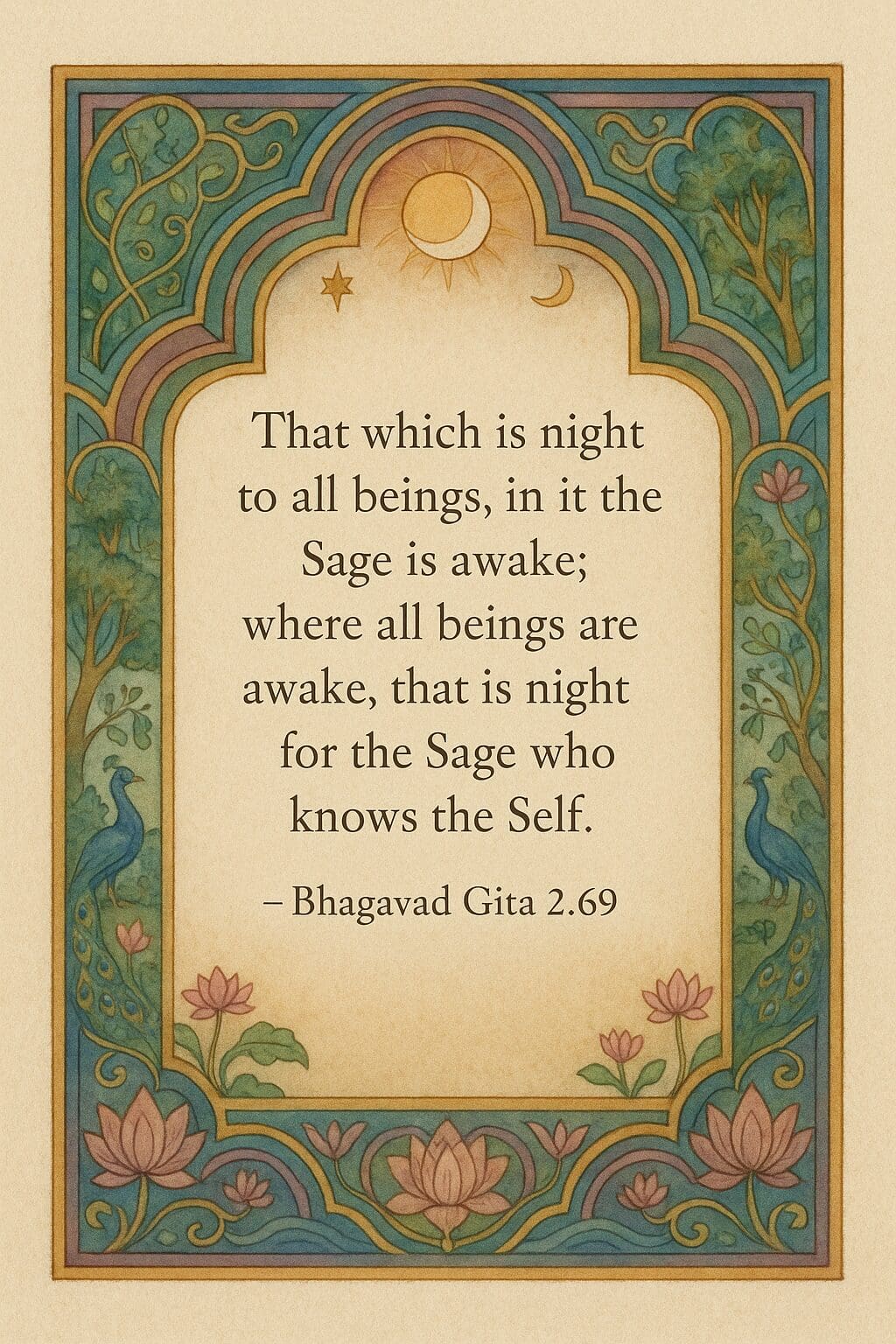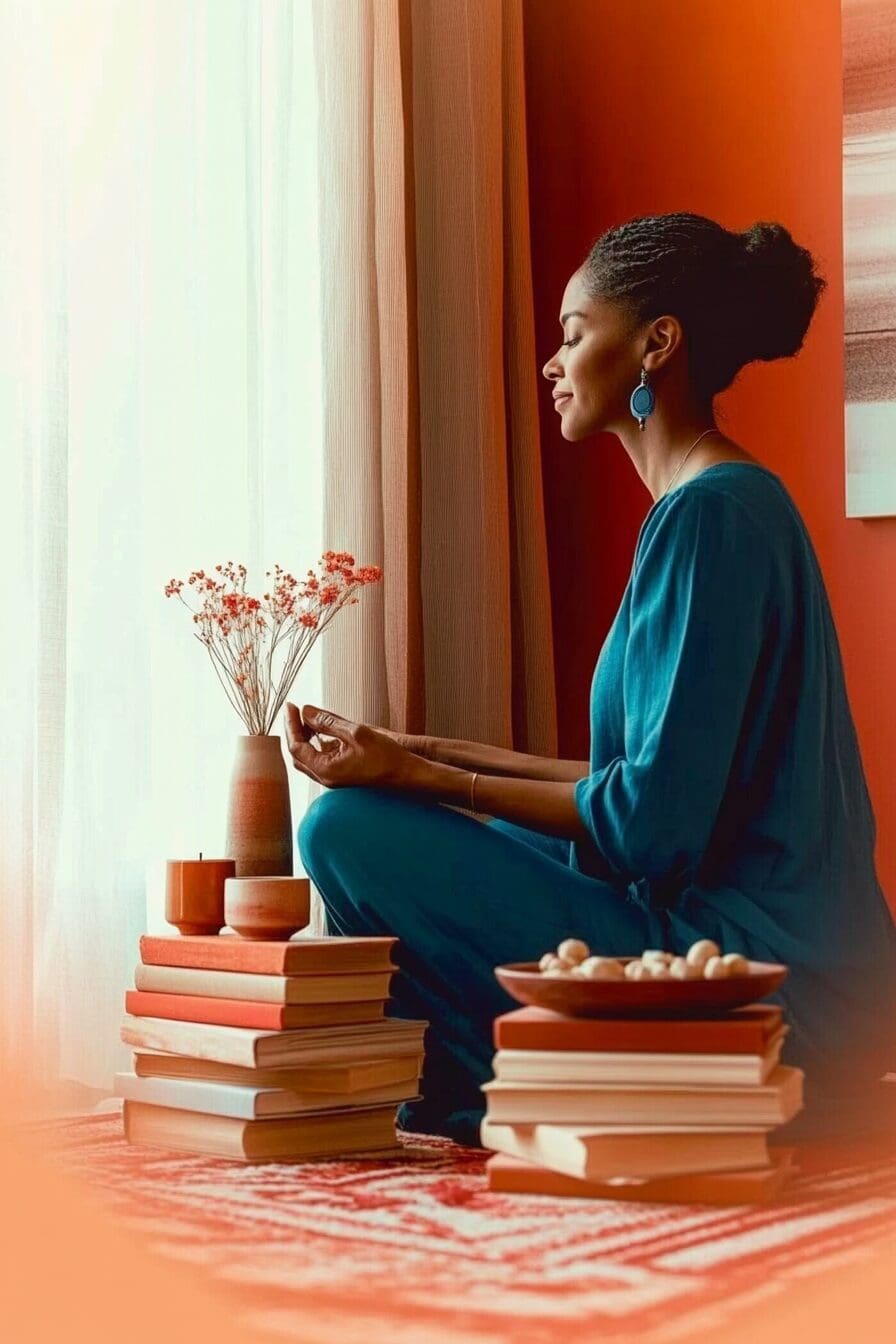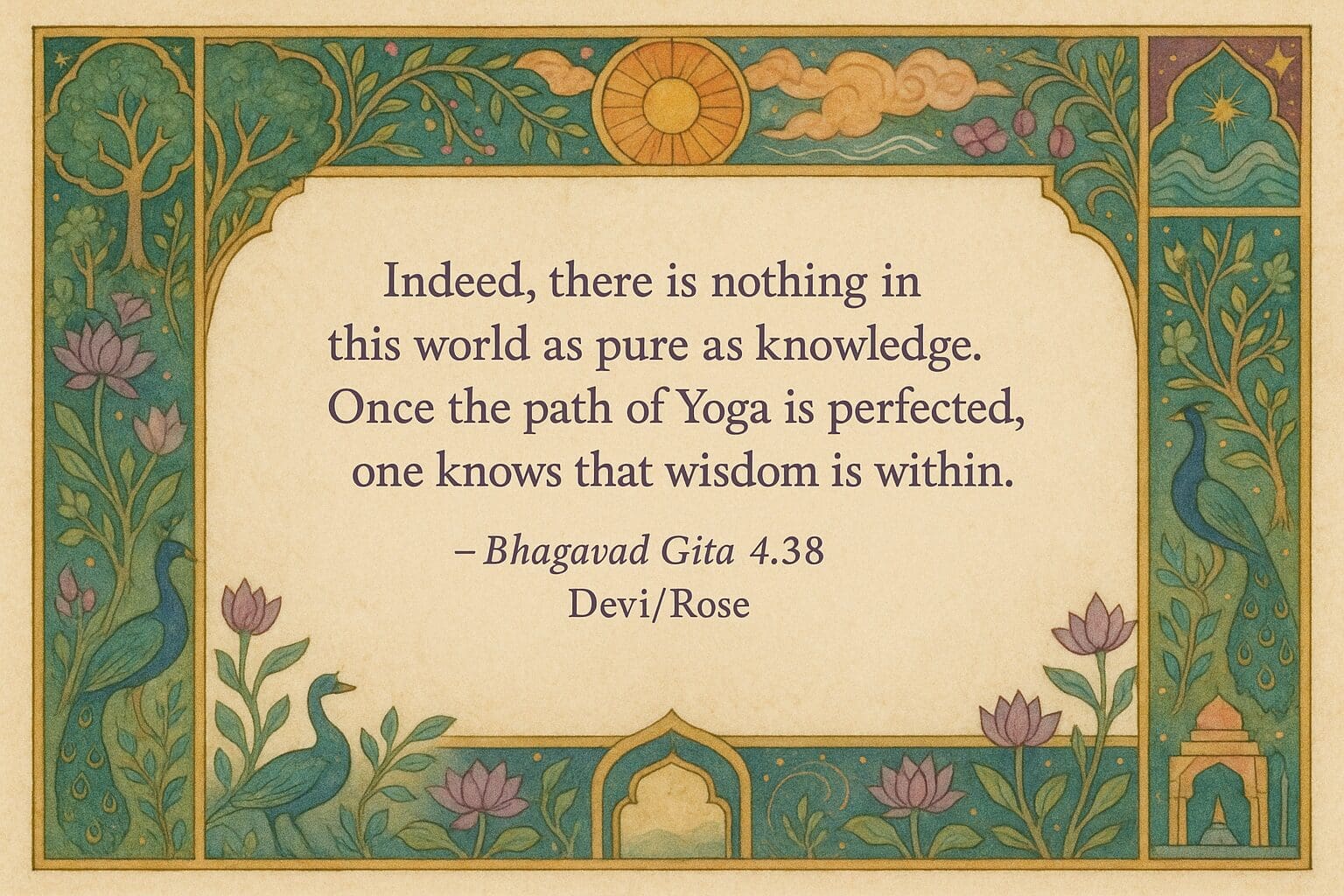Reflections from our Women’s Gita Podcast: Chapter 3 – On Karma, Consumption, and Conscious Living
Sitting with the Stuff
I’m sitting in my new place surrounded by boxes, and honestly? I’m confronting every single thing I own. Having just moved, the question of what’s necessary versus what I’ve been carrying – sometimes literally – has become impossible to ignore.
All I have are books and clothes. Books are a different metric – they’re shreyas, the higher good. But clothes? Preyas. Gratifying. Looking at them now, I find myself asking: who is this person?
In our latest Women’s Gita podcast episode, as Nischala Devi and I explored the opening verses of the Bhagavad Gita’s Third Chapter and Arjuna’s crisis on the battlefield, this question kept surfacing: How do we know when we’re taking more than our share?
It’s the same question Arjuna is essentially asking Krishna: If the higher Self exists equally in all beings, what am I doing here in this decisive action? What’s the right relationship between my philosophy and my participation in the world?
For most of us, that battlefield looks different from ancient Kurukshetra. Mine, right now, looks like moving boxes and the accumulated weight of stuff. Yours might be the closet you can’t quite close, the storage unit you haven’t visited in years, or that 4 a.m. moment when you’re scrolling another online sale, wondering if you really need it.
The Teacher I Didn’t Expect
I left monastic life officially a month ago. I’m accustomed to austerity – probably more than most people reading this. And yet, re-entering what I half-jokingly call “the world of hustle” has been its own education.
Over the last few years, in anticipation of this move, I’ve become what you might call a junk hustler: Poshmark, yard sales, thrifting, redistributing – a job for the marginal, like monks and yoginis. And here’s what surprised me: this practice has become one of my most profound teachers about prakriti (PRAK-ri-tee)- about nature, matter, the manifest world, and our relationship to it.
My teacher, Srivatsa Ramaswami, once said something that never left me: there’s a point where you’re taking more than your share from prakriti. You’re taking too much from nature.
This idea goes completely against the Western myth of perpetual growth – the American Dream of more, bigger, better, always. We know intellectually it’s not sustainable. But living that knowledge? That’s the gap Arjuna is standing in.
It’s Not Always Summer
Here’s what prakriti teaches when we pay attention: it’s not always summer.
Look at nature around us – there are seasons. Accumulation has its time (autumn’s harvest), but so does release (winter’s composting), renewal (spring’s emergence), and abundance (summer’s growth).
Prakriti’s intelligence is circulation, not accumulation. She moves, cycles, transforms. Nothing stagnates in her healthy systems.
But we’ve created a culture of perpetual summer – constant growth, endless harvest, no fallow time. Fast fashion embodies this perfectly: fifty-two “micro-seasons” a year, constantly producing, never resting. When I sort through donations at local mutual-aid events and see clothing with tags still on, I’m witnessing the consequences of breaking prakriti’s rhythm.
Who told us it was okay to buy something to wear once? When did we agree to this?
The Violence We Don’t See
Fast fashion is not ahimsa – not non-violence.
There’s violence to the workers – often women and children – in sweatshops. Violence to the earth through pesticides, dyes, microplastics, and water pollution. Violence to our own consciousness through disconnection from consequences. Violence to future generations inheriting our landfills and our climate.
When the Gita asks us to consider the impact of our actions, this is what it’s talking about – not abstract philosophy, but the actual wake we leave in the world.
I say this not from a place of having it figured out, but as someone who just moved and had to reckon with every single item I thought I needed. The overwhelm is real. The seduction of abundance is real. And the difficulty of knowing where the line is – that’s real too.
Prakriti as Teacher: The Samkhya Thread
In Samkhya philosophy, prakriti loves purusha – nature performs for consciousness, supports its evolution. When the yogi becomes realized, nature herself becomes the means of liberation. She is yoga’s method and teaching.
I see this now in the secondhand economy. When I’m thrifting or facilitating clothing swaps, I’m participating in prakriti’s own movement – witnessing her abundance, learning from her intelligence, and discovering what truly circulates.
This isn’t renunciation for its own sake. It’s right relationship.
Vairāgya – etting go – doesn’t mean rejecting the world; it means loving something, using it, appreciating it, and releasing it when it’s time. It means joining prakriti’s flow instead of damming it through hoarding.
Mutual Aid, Not Charity
Through our Mountain Area Mutual Aid work, we’ve redistributed tons of clothing, food, and housewares. We’ve cared for neighbors’ needs. But mutual aid transcends the charity model – it’s not hierarchical, not about feeling good for giving to “the less fortunate.” It’s reciprocal: neighbors helping neighbors, each of us responsible for the circulation.
This is shreyas, not preyas – the higher good, not ego gratification.
The Katha Upanishad asks us to know the difference between shreya (what serves the highest good) and preyas (what gratifies the ego). That discernment helps us see whether we’re taking more than our share.
I ask myself constantly: Is this good, or is it gratifying? Is this necessary, or am I filling some other emptiness?
I don’t always get it right. That’s not the point. The point is asking.
Closet as Battlefield
So here I am, standing before my unpacked boxes, asking Arjuna’s question in my own way. If I understand these teachings – about taking only my share, about circulation and ahimsa – then what does “necessary action” look like?
For me right now, it looks like:
- Renting instead of buying
- Actually wearing what I own before considering anything new
- Participating in clothing swaps with friends and neighbors
- Using services like Trashie to keep textiles out of landfills
- Repairing instead of replacing
- Supporting local mutual-aid networks
- Teaching resale skills to others who want to learn
I’m not prescribing this for anyone else. You stand on your own battlefield, with your own questions and your own prakriti. What I am suggesting is that we keep asking.
Black Friday: A Different Kind of Battle
Consider making the Friday after Thanksgiving a Buy Nothing Day.
Not as punishment. Not as moral superiority. But as practice.
As an experiment in asking:
- Do I need this, or am I gratifying my ego?
- Is this shreyas or preyas?
- Am I taking more than my share?
- How can I participate in circulation instead of extraction?
Instead of lining up for deals, what if we:
- Organized clothing swaps in our communities
- Shared tools and equipment with neighbors
- Repaired something we already own
- Made, cooked, or upcycled something
- Offered our skills in exchange for others’
- Simply rested—honoring the fallow season and letting the earth breathe
This is karma yoga: necessary action with self-transcending motive, for the world’s welfare.
Not perfection, but participation.
Not renunciation, but right relationship.
The Question That Keeps Returning
How often do we consider the impact of our actions?
Prakriti is always teaching, if we’re willing to listen. She shows us the rhythm of enough—the seasons, the cycles, the natural intelligence of circulation. She shows us, through the mountains of discarded clothing and the climate crisis, what happens when we break that rhythm.
This isn’t about guilt. It’s about relationship. About remembering that prakriti loves purusha—that she serves our awakening – and that when we honor her intelligence, when we take only our share, she becomes both teacher and liberation.
So this season, as marketers gear up to convince us we need more, maybe we can step off that battlefield and into the circle of circulation instead. Maybe we can ask: What’s necessary? What’s enough? What does right relationship look like now?
The boxes will eventually empty, but prakriti’s teaching remains:
it’s not always summer.
And there’s profound relief in finally moving with her seasons instead of against them.
This is one of the Gita’s most fundamental invitations – not to shame us, but to wake us up. To bring us into conscious relationship with our choices, our consumption, our footprint in prakriti’s web.
The battlefield is wherever we are. The choice is always now.
I’m still learning. Still balancing the austerity I know with the world I now live in. Still making mistakes and buying things I don’t need. But I’m asking – and in the asking, something shifts.




